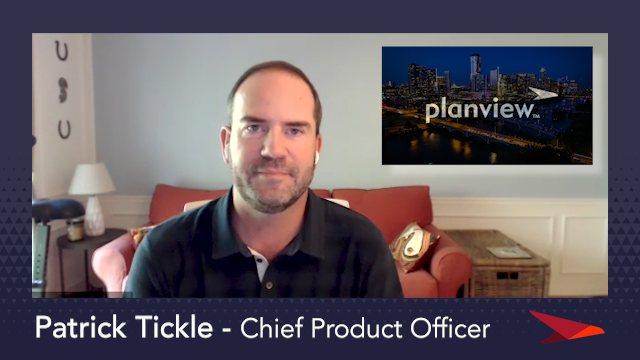
Enterprise agility can be hard to achieve for companies that weren’t built from the ground up as software companies. Old habits die hard, even under the glossy new surface of SAFe operating procedures and cadences.
Similar to the beloved genre of transformation TV shows, there is a key to what sticks. Queer Eye gives fabulous makeovers to some very deserving people over a tightly-packed three-day visit. Dancing With The Stars develops amazing dance skills in celebrities over the course of several physically grueling months. Who do you think will carry on their new lifestyle once the show is over?
I’d put my money on the DWTS stars. They spend days and days practicing and training for each dance, watching their reflections in the mirrored studio walls until they get it right. The longer they survive elimination, the longer they can practice and improve. By the end of the season, they’re exhausted but exuberantly transformed. They’ve learned the discipline required to maintain their new physique.
On the other hand, despite the great tips from the Fab Five, the guests on Queer Eye will more likely slide back into their old ways and habits. After all, they only had a few minutes of instruction in front of a three-way mirror.
Software delivery organizations implementing SAFe are no different. They need someone to hold up the mirror to them over time, show them their real reflection. Otherwise, they cannot see how old bad habits are creeping back into their daily work and undermining the lean-agile practices advocated by the framework.
What would they see in that mirror?
- Feature velocity is static PI over PI (Program Increment). While the PI quarterly cadence has been implemented, the rate of value delivery is flat.
- High volumes of Work-In-Progress (WIP) are present in every ART (Agile Release Train), equivalent to more than 1-2 work items per FTE. Lean’s pull mechanism is being overridden by a push “habit”, with product owners foisting work on teams beyond their capacity.
- Work is aging. Planned work is interrupted by fast-tracked work, to an extent that only a trickle of started work makes it to completion. Cycle times are deceivingly short, because only the smallest, most urgent work is getting done.
- Investments in the long-term sustainability of a product are minimal (paying down tech debt, patching vulnerabilities). A dominant business stakeholder continues to dictate what gets done, while the product manager (who should own the roadmap) mostly triages incoming requests.
At the core of the problem is the fact that lean-agile and SAFe talk about organizing around value and improving the flow of value through development value streams, but few organizations are equipped with tools to implement those principles.
Portfolio management and enterprise agile planning tools are designed to help follow agile practices, but cannot quite instill the intent. As a result, even with an army of agile coaches, enterprises go through many failed attempts at agile, while never really seeing the benefit. In the 2020 State of Agile report, the vast majority of respondents (84%) said their organizations were below a high level of competency with agile practices.
Fortunately, a new category of tools is now devoted to the intent. Value stream management (VSM) tools like Planview Viz™ provide a lens into the people, processes and technology that influence how quickly and well work gets from business idea to customer, especially when following SAFe.
VSM tools hold up the mirror to product value streams, making it possible to observe and measure the mechanics for delivering a product to market. They trace how work traverses the network of expert practitioners involved (product owners, developers, designers, testers, release managers, security specialists, support teams and operations, to name a few), and identify the roadblocks for delivering faster — high WIP, lack of resources, dependencies, bottlenecks, unplanned work, etc.
Agile coaches can use this information to develop a culture of continuous improvement in their teams and to finally achieve tangible improvements to time-to-market and velocity. The practice is fast growing in popularity, with 81% of organizations implementing or planning to implement it, according to The Forrester Business Technographics Global Infrastructure Survey 2019.
With the ability to actually see and measure the impact of changes to teams, tools and process, VSM can begin to show the pounds dropping and the muscle building. It motivates an organization implementing SAFe® to get on the treadmill when all they want to do is crawl into bed. VSM drives a shift in habit across teams, management and leadership alike to ensure that this agile transformation doesn’t fail.
Measuring your SAFe Transformation
Still struggling to accelerate time-to-market despite significant investment in SAFe and other methodologies? Tired of proxy metrics like ceremonies, certifications and tooling not producing tangible business value?
In this on-demand webinar, ICON Agility Enterprise Transformation Coach, Dan James, and Tasktop Senior Value Stream Architect, Lee Reid, present how to:
- Enable real-time visibility into the health of your product value streams with live value stream visualization of your software portfolio.
- Find the bottlenecks impacting the end-to-end flow of value and focus investments where they’ll truly make a difference.
- Measure end-to-end flow for each value stream and tie it to key business results with Flow Metrics.
- Use the right visual and semantic language with Product Management to ensure debt and risk mitigation work are not neglected in PI Planning.
Watch on-demand today and begin measuring your SAFe journey to ensuring you’re rooting out bad habits and on the path to success.
Download the e-book
Learn more about measuring your SAFe journey with Flow Metrics in this e-book:
- How the Flow Framework helps you establish your baseline to see where you are in your SAFe journey today—and where you need to go to improve revenues, time-to-market, customer retention and more.
- How to model your value streams to generate a set of business-level metrics to identify what’s slowing you down and where you need to optimize to improve end-to-end flow.
- How the Flow Framework provides a common language that both IT and business leadership can understand to make key decisions to improve business outcomes.
- How leading organizations across telecommunications, healthcare and investment are using Planview Viz to generate instant insights with Flow Metrics to boost business agility and customer responsiveness.





